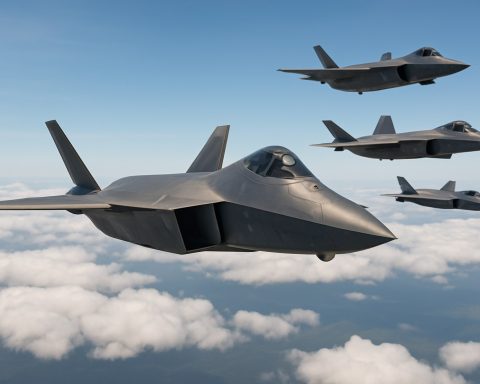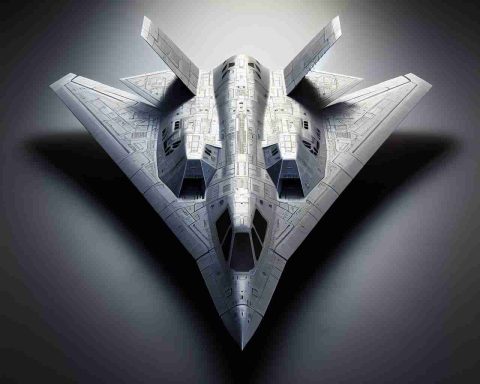- Isar Aerospace tested its Spectrum rocket in Norway, marking a significant step for Europe’s commercial satellite launch efforts.
- The rocket was launched from Andøya Spaceport, deep within the Arctic Circle, aiming to bolster Europe’s space ambitions.
- Although the flight was intentionally terminated 30 seconds in, it provided critical data for future success.
- Isar Aerospace views the mission as an essential phase of development, not a failure.
- Despite weather challenges, this launch symbolizes Europe’s drive towards a home-grown space economy.
- The event signals Europe’s determination to establish its own satellite launch capabilities, reducing reliance on foreign sites.
- Isar Aerospace remains committed to its vision, with further attempts planned for the future.
Amidst the stark and captivating landscapes of Norway, ensconced nearly 200 miles within the Arctic Circle, a formidable ambition took flight—and then transformed into an unexpected spectacle. It was here, at the Andøya Spaceport, where the highly anticipated Spectrum rocket, crafted by the German startup Isar Aerospace, roared towards the celestial heights. This was not merely a rocket launch; it represented Europe’s audacious bid to engrain itself into the orbit of commercial satellite launches, effectively declaring a new era for the continent’s space aspirations.
The seasonal sun was at its zenith as the rocket ascended into the polar sky at precisely 12:30 p.m. local time, its ascent chronicled by eager eyes and capturing imaginations. However, barely 30 seconds into its journey, the mission swung from euphoria to astonishment. In a deliberate maneuver, the flight was terminated, causing the rocket to plummet into the freezing waters below—a blazing display of controlled chaos, yet a scene firmly etched with intent rather than mishap.
Despite the spectacle of flame and saltwater, Andøya Spaceport stood undisturbed, the launch pad remaining stoic against the odds. This moment of crisis prompted immediate response measures, a testament to the unyielding commitment to safety and precision in a field where every second counts.
While the mission’s unexpected conclusion may suggest a setback, the narrative spun by Isar Aerospace is one of triumph cloaked in innovation. The company emphasized the trove of invaluable data gathered, asserting this test as an indispensable step in refining their path forward. Previous attempts had been thwarted by capricious weather, with heavy winds and rain casting shadows over earlier plans. Yet, against the Arctic tempest, a crucial chapter unfolded, adding depth to Europe’s vision of sovereign spacefaring capability.
Europe’s pursuit of a ‘space economy’ has long danced between distant shores, launching from French Guiana or the sunny expanses of Cape Canaveral. Yet, with Andøya’s test flight, the quest to create a homegrown cosmos-seeking industry gains both perspective and momentum. Isar Aerospace emerges undeterred, its resolve undiminished, staunchly focused on preventing the fire of vision from fizzling out among the stars.
As the embers cool in the icy Norwegian seas, the message rises clear and unwavering: this was but the first pulse of Europe’s heartbeat in the sphere of satellite launches. The sky, rendered momentarily scarlet by flames, becomes a canvass for dreams yet uncharted, inviting another attempt, another launch, into its vast embrace.
Europe’s Space Ambitions Get a Boost: What You Need to Know About Andøya’s Rocket Launch
Overview
The recent launch attempt by Isar Aerospace’s Spectrum rocket, while visually arresting, was only the beginning of a journey marking Europe’s deeper commitment to establishing itself as a formidable presence in the commercial satellite launch sector. The strategic implications for Europe’s space economy are far-reaching and open up numerous questions and discussions about the future of satellite launches on the continent.
Key Insights and Analysis
1. Significance of the Andøya Spaceport
The Andøya Spaceport in Norway represents an essential milestone for Europe’s space infrastructure. With geographical advantages for polar and sun-synchronous orbit launches, it offers a strategic alternative to launch sites in French Guiana or Cape Canaveral, especially for European enterprises seeking autonomy in their space missions.
2. Market Trends and Forecasts
The global space economy is projected to grow significantly in the coming decades. The commercial satellite launch market, particularly small and medium satellite launches, is estimated to reach a value of $7 billion by 2027, driven by the demand for global connectivity, Earth observation, and IoT networks (Morgan Stanley).
3. Technical Challenges and Lessons
While the Spectrum rocket’s termination was controlled, it highlighted the inherent challenges in space launches. Such controlled terminations are vital for gathering data, improving safety protocols, and refining engineering designs. The collection of precise data during this launch will aid Isar Aerospace in addressing technical shortcomings.
4. Sustainability and Environmental Concerns
Sustainability is a growing consideration in the aerospace industry. The implications of rocket debris and launches on the environment are significant. Companies are working on developing cleaner technologies and more efficient launch methods to minimize the ecological impact, adhering to global environmental standards.
5. Security and Technological Advancements
With the proliferation of satellite technology, cybersecurity becomes paramount. Ensuring that satellites are protected from potential cyber threats and espionage is crucial. Investments in secure communication technologies and encryption are necessary to safeguard data integrity.
Pressing Questions
How does this affect the European space sector’s global competitiveness?
This endeavor positions Europe to reduce dependency on non-European launch facilities, fostering a competitive domestic market that could rival the established players like SpaceX or Arianespace.
What future collaborations could we see between European and global aerospace companies?
Expect increased collaborations with other European nations and companies focusing on satellite technology and space exploration. Joint ventures could catalyze further innovation and cost-sharing strategies in an increasingly competitive landscape.
Actionable Recommendations
– Stay Informed: Follow updates from reputable sources such as the European Space Agency (ESA) and Isar Aerospace for the latest in European space initiatives.
– Consider Investment Opportunities: With the market forecast looking positive, consider exploring investment opportunities in the burgeoning space technology sector.
– Encourage STEM Education: Support initiatives that promote Science, Technology, Engineering, and Mathematics (STEM) education to foster the next generation of aerospace engineers.
Related Links
For more information on Europe’s space challenges and advances, visit the Isar Aerospace and European Space Agency websites.
Understanding these developments will provide insights into how Europe is positioning itself in the global space race and the implications of its newfound momentum.









